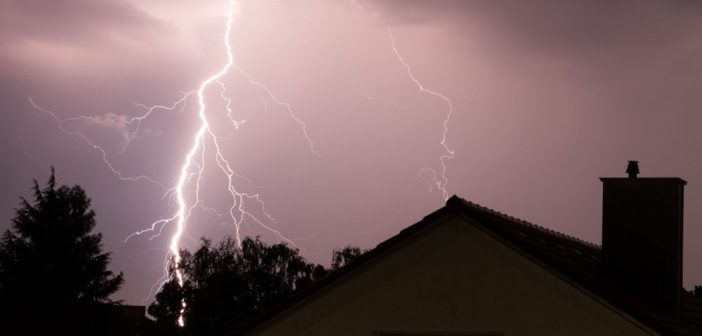While most families like to enjoy the summer months outdoors, the season brings with it more than just sunshine and warm temperatures. It’s also the season in which powerful storms can cause a lot of damage. You can help protect your family in the summer by following some of these simple summer storm tips.
Stay Away From Lightning
While dark clouds may mean a storm is coming, you likely don’t think much about it until the rain starts to fall. However, lightning doesn’t need rain in order to occur. While it may be rare for lightning to strike someone, it does happen. It can also cause other problems that may be just as lethal. For example, if you’re swimming in a pool or standing in a body of water that is struck, severe electrocution could occur.
The first way to prevent lethal consequences from lightning strikes is to know when lightning might happen. Dark clouds are a usual first sign. Another indication is a tingly feeling in the air. Perhaps your hair is starting to stand up on your head or the hair on your arms is standing up. That means that your body is reacting to the electricity in the air. There might be a lightning strike close by you.
A way to help protect yourself at the moment is to crouch down as low to the ground as you can. Also, keep your ears covered. Once the feeling has subsided, you should seek shelter indoors immediately.
Have An Evacuation Kit Ready
In some cases, you may be ordered to leave your home due to the threat of a storm. In this instance, you are not allowed to stay at home. To ensure that you are prepared to leave the home, you should have an evacuation kit ready at hand. Communication devices are always a good idea to bring along. Radios that you can give to the rest of the members of your family in case of separation is critical.
You should also try to have at least one extra pair of clothes per person. That extends to an extra pair of shoes. Flashlights, snacks, and bottles of water should also be included with your evacuation kit. A basic first aid kit is also an excellent item to have.
Stay Inside
In the event that an emergency evacuation does not happen and you are able to remain at home, you should still have a few items to prepare for the worst. Non-perishable foods should be stocked to last a few days. You never know how long the electricity may be out or when the store might be open again. Because many non-perishable foods are canned, you should also have a can opener to help open them.
Bottled water is the next item to stock up on. You should be able to have at least one gallon a day. Stretch the supply for two weeks. It’s more important to have water than food in survival situations.
Again, flashlights with an extra supply of batteries are also a great idea. Finally, make sure that you have waterproof canisters that you can store important items like your records and documents inside of.
Count The Seconds
Perhaps you’ve learned that counting how long it takes to hear thunder after you see lightning can roughly be translated to how far away the storm is. Do you know the measurement at which you need to take shelter inside is though? It’s called the 30/30 rule. If the number that you count is below 30, you should seek shelter inside of your home or a building immediately. Then you should wait until it takes at least 30 minutes for the thunder to be heard between lighting strikes.
The 30/30 rule gives you an adequate amount of time to separate yourself from the storm so that you can travel outside safely.
Prepare The House
Your home won’t offer much protection if it’s falling apart. Before storm season begins, you should consider performing a few home improvements to ensure that your house is storm-ready. One of the first steps to take is to trim branches on your trees. Those branches that are rotted, falling apart, or too long are more likely to break off during a storm. They might hit whatever it is that below them, around them, or they can travel a distance and cause serious harm to something or someone. Keep up on trimming your trees and ensuring that they are strong enough to hold up against a storm.
Take a few moments to consider the items in your yard. Which of them are light and prone to being blown away with high winds? Those items should be moved inside of the home, garage, or shed. It may be a pain to have to disassemble certain parts of a swing set, for example, but it will also keep your house safe. When the high winds pick up, that item won’t be launched through the window.
Check your landscaping in terms of tiles and pavers. Is anything loose or falling apart? Those can be picked up by strong winds and tossed into the home, too. Loose tiles should be removed or weighed heavily down.
You should also consider your trash can. Even if it’s full of garbage, the plastic material of the can make it lightweight and prone to flying around or tipping over from strong winds. Unless you want to spend time cleaning up garbage in your lawn, then you should also move that to a place of safety.
Finally, you should reinforce your home. Put in storm doors, storm windows, and other heavy-duty materials to make your home strong. If flooding is a concern, then build a wall around your home with sand bags.









